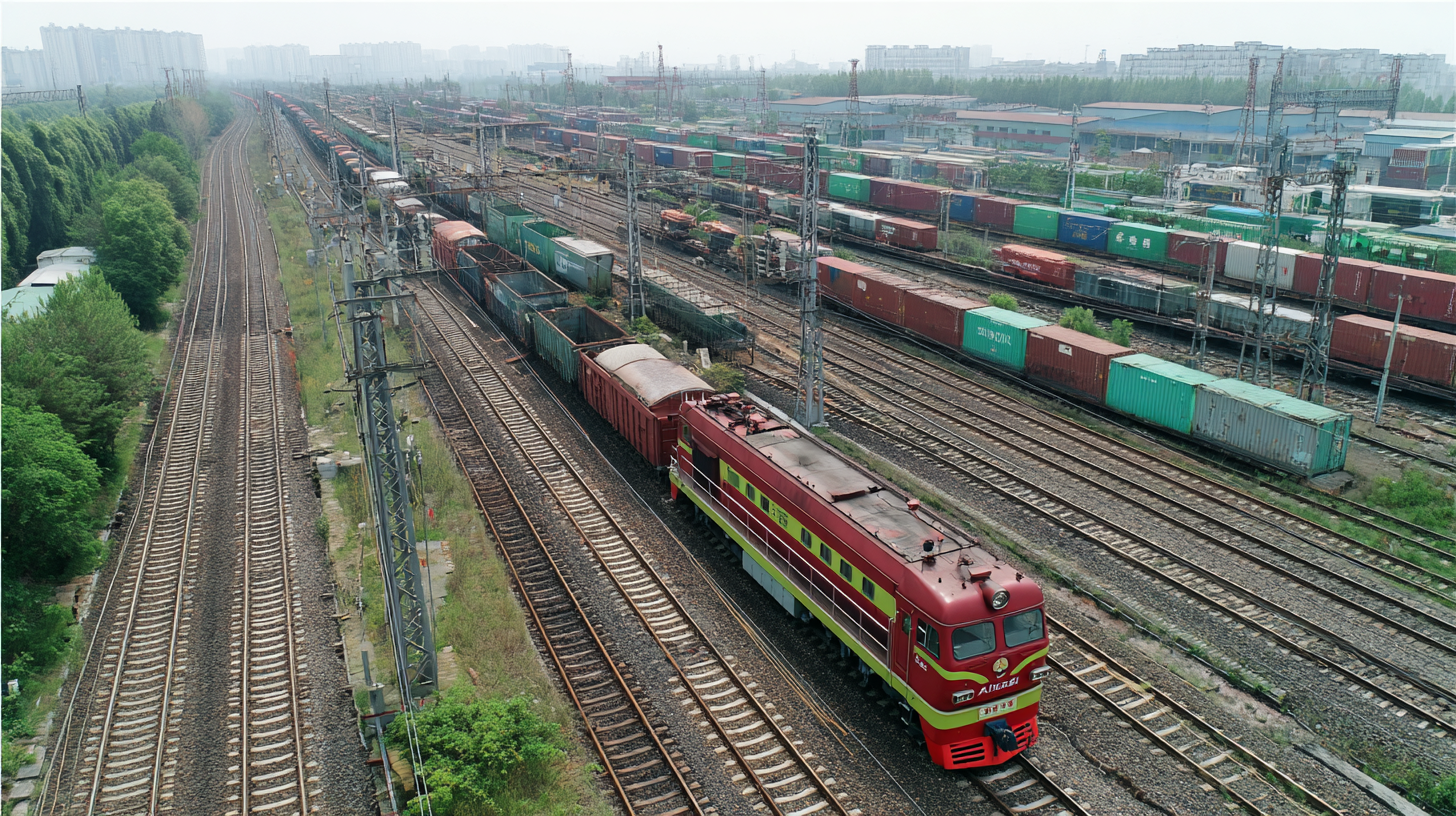The role of Railway Transport in global logistics has become increasingly vital, especially as international trade dynamics evolve. According to the World Bank, railways are one of the most efficient means of transporting bulk goods, with freight transport by rail expected to grow by 15% through 2025, aligning with significant events like the China Import and Export Fair. As the 138th session of this fair is set to showcase advancements and innovations in logistics, the focus on Railway Transport reflects a strategic shift towards more sustainable and cost-effective solutions. The China Railway Corporation reported a 12% increase in freight volume over the past year, underscoring the sector's growth potential. This burgeoning sector not only facilitates trade but also enhances supply chain efficiency, making it a crucial component in meeting the demands of a rapidly changing market.

 Innovative technologies are set to enhance railway freight efficiency, significantly contributing to the anticipated 15 percent growth in freight volume showcased at the 2025 China Import and Export Fair. This event will spotlight advancements in sustainable transport solutions aimed at revolutionizing the logistics sector. With countries like the UAE and Kuwait embracing innovations, their initiatives signal a robust shift towards modernized railway systems that emphasize reduced environmental impact while optimizing operational efficiencies.
Innovative technologies are set to enhance railway freight efficiency, significantly contributing to the anticipated 15 percent growth in freight volume showcased at the 2025 China Import and Export Fair. This event will spotlight advancements in sustainable transport solutions aimed at revolutionizing the logistics sector. With countries like the UAE and Kuwait embracing innovations, their initiatives signal a robust shift towards modernized railway systems that emphasize reduced environmental impact while optimizing operational efficiencies.
As we witness the rise of new rail technologies, it becomes crucial for stakeholders to consider integrating sustainable practices into freight transport. Tips for enhancing efficiency include investing in advanced traction technologies and utilizing optimized scheduling systems to decrease turnaround times. Furthermore, fostering partnerships between governments and private sectors can facilitate the development of comprehensive rail networks that cater to both domestic and international needs.
Moreover, collaboration among industry leaders will play a pivotal role in driving innovation. Engaging with platforms dedicated to showcasing rail advancements can inspire new ideas and solutions. Attending expos and conferences is an excellent way for professionals to stay informed about cutting-edge technologies and best practices that promise to reshape railway freight logistics in the coming years.
As the 2025 China Import and Export Fair approaches, the anticipated 15 percent growth in freight volume is poised to transform the dynamics of international trade. A significant aspect of this growth stems from recent upgrades to China’s railway infrastructure, which have been extensively documented in industry reports. According to the China Railway Corporation, the introduction of faster trains and improved logistics hubs has increased the efficiency of freight transport, reducing delivery times by approximately 30%. This rapid enhancement in service not only streamlines domestic transportation but also strengthens China's positioning as a global trade hub.
Moreover, the integration of advanced technologies such as big data analytics and IoT in railway operations has enabled real-time tracking and improved cargo management. A report by the International Transport Forum (ITF) highlights that countries with upgraded rail systems have seen an increase in export capabilities by around 20%, thereby enhancing their competitive edge in global markets. As companies seek reliable and efficient transport solutions, the impact of these railway upgrades at the 2025 fair is expected to resonate across the global supply chain, influencing import-export dynamics profoundly.
The 2025 China Import and Export Fair is set to showcase significant advancements in railway transport, with a projected 15 percent growth in freight volume. Key stakeholders from the railway transport sector will gather at this prestigious event to discuss innovative strategies and technologies that drive the industry forward. Their presence underlines the importance of collaboration among leaders in the sector, as they seek to adapt to evolving market demands and enhance operational efficiency.

In a landscape where safety and sustainability are paramount, various recent events illustrate the industry's proactive approach to tackling pressing issues. Notably, discussions at the Global Rail Transport Infrastructure Exhibition and Conference 2024 emphasized the pivotal role that railways play in addressing societal challenges, such as violence against women and girls in public transport. With commitments from global stakeholders to enhance safety measures, the upcoming fair will serve as an ideal platform for sharing best practices and shaping a collective vision for the future of railway transport.
The 2025 China Import and Export Fair is set to be a groundbreaking event for the railway transport sector, showcasing innovative sustainability initiatives aimed at reducing the environmental impact of freight operations. With a notable 15 percent growth in freight volume, the focus on eco-friendly practices highlights a commitment to greener logistics solutions. Exhibitors are expected to unveil technologies such as electric locomotives, energy-efficient trains, and digital tracking systems that optimize fuel consumption and minimize carbon footprints.
Tips for attendees include engaging with experts to learn more about the latest sustainability practices in the industry. Be sure to participate in workshops and discussions aimed at sharing insights on how companies can implement these initiatives effectively. Additionally, networking with fellow professionals will foster collaboration and inspire new ideas for integrating sustainability into existing railway operations. This fair not only serves as a platform for showcasing advancements but also as an opportunity to promote a collective effort towards environmental responsibility in railway transport.
The anticipated 15 percent growth in freight volume at the 2025 China Import and Export Fair marks a significant transformation in railway transport dynamics. This surge is largely driven by technological advancements and the prioritization of efficiency in logistics. Railways, being one of the most environmentally friendly and cost-effective transportation modes, are increasingly leveraging automation and smart cargo tracking systems. These innovations not only enhance operational efficiency but also improve safety and reduce delivery times, making railway transport a more attractive option for businesses.
Moreover, the expansion of strategic rail networks and investments in infrastructure are pivotal in supporting this growth trajectory. Enhanced connectivity between major trade hubs facilitates faster transit times and opens up new trade routes. This proactive approach to capacity building aligns with China's broader goals of modernization and sustainable development. As industries continue to adapt to the evolving global trade landscape, the expected growth in freight volume at the fair is a testament to the resilience and adaptability of railway transport in meeting future demands.

